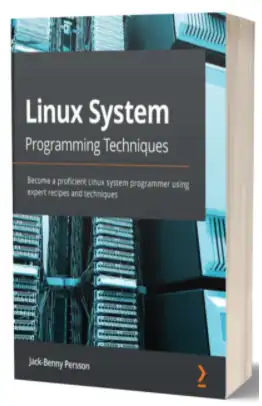Linux System Programming Techniques eBook by Jack-Benny Persson is all about developing system programs for the Linux operating system.
This ebook published by Packt normally sells for $27.99. For a limited period of time, it is being offered at no cost.
To obtain the ebook for free, visit TradePub’s giveaway page.
Once you’ve filled out the form and connected your Linkedin account or entered your email address in the appropriate fields, click “Download.”
This 432-page e-book has a file size of around 3.2 MB. This free offer expires on March 9, 2022.
Alternately you can download it from this link.
About Linux System Programming Techniques eBook:
Linux is the most widely used open-source operating system in the world, and it operates on a wide variety of hardware, from large servers to small Internet of Things (IoT) devices.
The more you know about how to write system programs for Linux, the more you can do with the operating system and connect it to other programs and systems.
The book starts with a glance at the Linux filesystem, its basic commands, built-in manual pages, the GNU compiler collection (GCC), and Linux system calls, then moves on to look at the GCC compiler.
You’ll then learn how to deal with errors in your programs. You’ll also learn how to catch errors and print relevant information about them, so you can fix them.

The book takes you through multiple recipes on how to read and write files on the system, using both streams and file descriptors.
As you learn more, you’ll learn about forking, making zombie processes, and daemons, as well as recipes for how to use systemd to manage daemons. After reading this, you’ll find out what it means for a library to be shared and how to start looking at different types of interprocess communication (IPC). It will also show you how to write programs with POSIX threads, how to debug your programs with the GNU debugger (GDB), and how to use Valgrind.
When you finish this book, you will be able to make your own system programs for Linux, such as daemons, tools, and clients. You will also be able to make filters.
